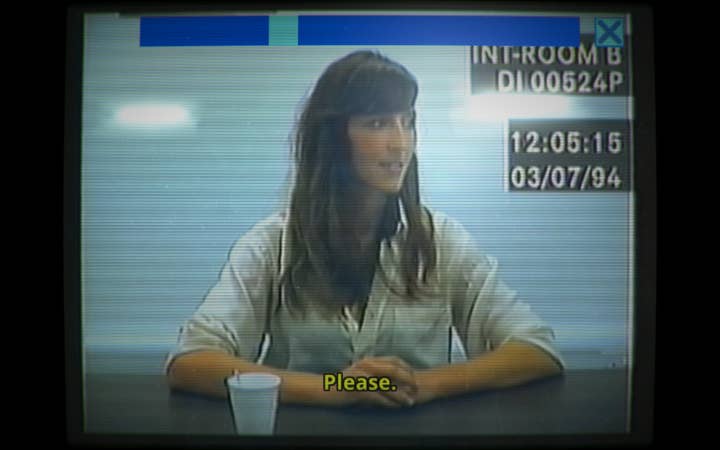Sam Barlow's guide to making narrative games
The Her Story and Telling Lies developer explains what makes games a strong narrative medium, and shares his thought process for creating stories
At our recent GI Academy Live event, Sam Barlow of Her Story, Telling Lies and Immortality fame laid out his thoughts on creating narrative-centric video games.
In his talk, which was aimed at inspiring and giving advice to students, Barlow first explained the specificities of narrative in games, exploring why the medium differs from other forms of entertainment, before sharing his own core ideas for building stories.
The singularity of narrative in games
- 1. Challenge
To start with, the developer explained why he felt telling stories in the medium of video games was a more exciting proposition than other forms of art. The first is that there is challenge, inherent obstacles that players have to overcome.
"That element of challenge is an incredible hook and is fundamental to how human beings work, that if you put an obstacle in someone's way, there is a very primal need to then overcome that obstacle," Barlow explained.
"Having that hook of your story, having this challenge element is fundamental to the idea of a video game."
"Having that hook of your story, having this challenge element is fundamental to the idea of a video game"
In Barlow's 2015 title, Her Story, the challenge comes from the player's task of trying to figure out what is happening in the narrative.
"There is a question you are asked to answer beyond whether this woman murdered her husband," Barlow said. "There is the challenge to understand and get to know this character, to receive a story that is not something that will just happen on its own. The player will have to contribute to that; they will have to infer things, figure things out, and read between the lines. The core mechanic asks you to pay attention and your action in choosing how to search and what to search for will move you closer and closer towards that goal."
- 2. Expression
Barlow's next element that he said elevates video game narrative above other mediums is expression.
"The simplest example of this for me would be something like the Mario games," he said. "The design of the gameplay there is such a well thought-out and thorough exploration of the idea of jumping, that different players can play it in different ways and you get to express yourself within the limitations of the idea of running and jumping. But you get to express yourself through the character of Mario. A super-skilled Mario player will be moving ten times faster, pulling off all sorts of clever tricks."
While his games don't involve platforming Italian plumbers, Barlow's portfolio does allow for player expression, he continued.
"The core search mechanic of Her Story in which you type words is very expressive," he explained. "You can, in theory, type in any English word. You can type in words that aren't even shown to you in the text yet. You might have a leap of logic and think: 'So and so did this thing, I think this is important', and start searching for things almost getting ahead of the narrative.
"In listening to the woman being interviewed talk, and picking up on things that she said, that becomes an expressive act because you are saying 'This is what I think is important in this scene'. The game is not highlighting those. It's not reducing those. It's saying you can pick up on anything in this scene."
This ties somewhat into the third element of video game narrative, which is exploration.

- 3. Exploration
Barlow explained that our natural desire to explore is "wired into our brain."
"We are, by our very nature, at a very primal level, compelled to explore and discover," he said. "The risk-reward of exploration, danger and discovery is really deeply hard-wired. It's very familiar across so many video games, [this] idea of exploration, particularly the exploration of a 3D space; so many games revolve around the joy and the pleasure of exploration."
When it comes to Her Story, Barlow views the game as a Metroidvania in how it handles exploration and how the narrative unfolds.
"As you discover pieces of the story, you are slowly building up a mental map of the story in the same [way] you would build a mental map of a planet in Metroid," he said.
"If you discover the names of key characters, events that happened, those essentially become your keys that allow you to navigate in different ways. You have the ability and then the requirement to rewatch clips in the same way you might retraverse in a Metroid game, and have a different understanding, and then be able to gain access to different areas.
"As you discover pieces of the story, you are slowly building up a mental map in the same [way] you would build a mental map of a planet in Metroid"
What we were essentially doing with Her Story is taking all that three-dimensional exploration, that spatial exploration, and transposing it onto the idea of a story."
- 4. Simulation
Barlow's final element for narrative is simulation, which is arguably a core ingredient of most video games.
"The modern 3D video game is full of simulations," Barlow said. "Whether that's the simulation of bullet physics, [or] the simulation of all sorts of crates and rubble that bounces around, vehicle physics, the AI of enemies you are fighting against and the simulation of how they work... It's integral."
With Her Story, Barlow actually tried to avoid the simulation element of video games. The title features no state tracking, meaning there isn't any kind of cause and effect.
"An interactive narrative is usually thought to be a choose-your-own-adventure, which is essentially nothing but a very simple piece of state tracking," he said.
"The big flaw there is that, in attempting to give the impression of a simulation, in trying to imply that there is cause and effect, we end up falling into these very simple descriptions of cause and effect. You've made one decision in chapter one and in chapter three, there will be a single binary consequence of that decision. Just naturally, inherently, we realise these aren't very sophisticated simulations, to the point where they're not really simulations and they fall down."
Sam Barlow's core tenets for building narrative in games
When it comes to designing his own video games, Barlow said he sticks to three core tenets: the emotion, the idea and the metaphor.
The emotion is self explanatory; it's what Barlow wants the player to feel. Then comes the idea, which he said is "more thematic, more intellectual."
"This is the idea that I want to get across," he explained. "The unique ability of a story is to allow you to feel and think at the same time. In real life, if we see someone run over in front of us, there's an immediate emotional reaction to that. Then a week later, we may reflect on this now the emotion has subsided, and think about our mortality and about what that meant. The beauty of a story is that we can do these things simultaneously because of the fact that we are choosing to interact with something that is not absolutely real but feels that way."
"The unique ability of a story is to allow you to feel and think at the same time"
Finally, there's the metaphor, which Barlow said can be understood as the game mechanic.
To illustrate how these three work together in tandem, the developer explained how they work in another one of his releases.
"In my game Telling Lies, the emotion was: what does it feel like to realise that the person you loved is not who you thought they were?" Barlow explained. "How does that feel, that combination of betrayal, of reality opening up, of sadness, the disappointment, the shock, that specific emotion, how does that feel?
"The idea is that we never truly know those that we are intimate with, which is quite a primal idea. You can dig into that idea more and ask: how well do we truly know other people, to what extend are we projecting ourselves onto them, how much is our impression coloured by our own experiences, by our subjectivity?
"And then the metaphor was surveillance, thinking about people who surveil, in this case government and FBI surveillance. To surveil someone is to sit and watch the minutiae of their domestic lives looking for the one little thing that we need. The person who is surveilling is obsessively watching someone, so they can come to know [them] in a great deal of detail, but the virtue of the surveillance is you have a very blinkered view onto them. In the old days, you'd be sat in a car looking through binoculars, so you're only seeing glimpses. You might be listening in on a bug or a listening device, so there is a limitation there to what you are seeing or hearing, and then [there's] the heightened surveillance we have in Telling Lies where you're spying through someone's webcam."
The reason why Barlow reduces a game's design to these core components is to try to keep things as tight as possible.
"This is a tool I use when starting a game," he explained. "So before getting into the weeds, I ask: 'Is this a good idea for a game? Is this going to work? If I put in lots of time and effort, in two years time, if I execute on this thing, will it be a game I can sell to people? Will it be a game that people understand, will it be a game worth making?'
"It's very easy to answer that question, because I can say that this is an emotion that I think is interesting and relevant to other human beings, this is an idea that, in itself, is worth exploring, raises lots of interesting questions, and the metaphor – which as I say often translates somewhat to the game mechanic – is understandable.
"Knowing that you have an interesting set of three things, for me, that is the starting point"
"Knowing that you have an interesting set of three things, for me, that is the starting point. I can now proceed to actually think these things through and put some more flesh on the bones."
This isn't just something that Barlow focuses on at the start of development; these components are something that influence decisions made throughout the entire development cycle of a game.
"At every step of the process, these are now useful tools to look at any given element of the game," he explains.
"A scene in the game, an implementation of the game mechanic, of a particular use of controls, something that you are tweaking or balancing. You look at it and go: 'Is this getting me closer to feeling that emotion? Is this going to take us somewhere where we'll feel that emotion? Does this allow us to explore that idea?'
"It's useful to just refer back to these, knowing that this is a solid foundation for the game. If you are constantly referring back to them and ticking them off, then you know you are on track to actually deliver on that original vision in a way that is focused and succinct."
More GamesIndustry.biz Academy guides to Making Games
Our guides to making games cover various aspects of the development process, whether you're a young game developer about to start a new project or an industry veteran:


